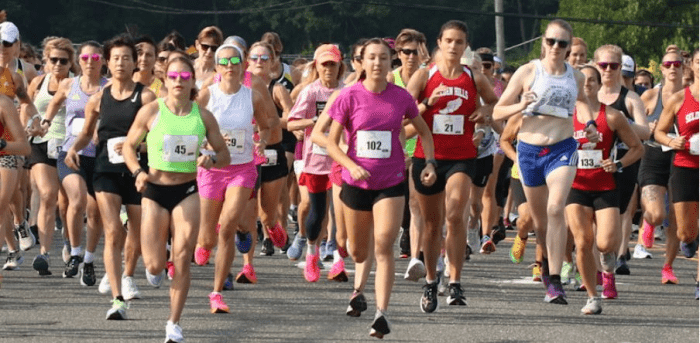Five days before her first birthday, Peyton Connelly had been crankier and sleepier than usual. When her mom, Shelly, went to retrieve her from her crib after a lengthy nap, “Peyton stood up and fell over,” Shelly says.
Alarmed, Shelly and her husband, Travis, 32, took their toddler to the local hospital. There, they were shocked to learn that Peyton had a malignant brain tumor.
“Fortunately, it was surrounded by benign tumor,” says the 33-year-old mom of two. Surgery to remove the mass was all that was required and after a two-week hospital stay, little Peyton went home.
No sooner did the Connellys pull into their driveway, however, did Shelly notice Peyton twitching, soon limp as a rag doll. Shelly and Travis rushed Peyton back to the hospital, where tests revealed a major setback: The 1 year old had suffered a massive stroke. She could barely lift her head and had lost use of the right side of her body.
“It was as if it wasn’t there,” Shelly says. Gone were Peyton’s budding verbal skills, too. The Connellys were told that intense physical, speech, and occupational therapy were all that could be done. Yet, progress was slow and frustrating.
Then, one day, “a light bulb went off,” says Shelly, as she was reading a magazine article about stem cells while waiting for Peyton to undergo an MRI at the hospital. Ah ha!
“We had banked Peyton’s cord blood. We had options,” she says. Indeed, Shelly and Travis had stored Peyton’s umbilical cord blood at birth through Cord Blood Registry, the world’s largest newborn stem cell company.
A healing natural resource
Cord blood is a type of blood in a baby’s umbilical cord that’s rich in powerful blood-forming stem cells known as hematopoietic progenitor cells (these cells aren’t embryonic stem cells). Hematopoietic progenitor cells — also found in bone marrow — are capable of renewing themselves and forming into more specialized cells.
“These master cells can differentiate and become different kinds of tissue in the body, to restore function,” says Dr. Rallie McAllister, the co-author of “The Mommy MD Guide to Pregnancy and Birth.”
After a baby is born, the umbilical cord and placenta are usually discarded. By collecting and freezing this blood instead, however, hematopoietic progenitor cells can be stored and used by someone who needs them — either the child from which the stem cells were derived, a family member, or even a stranger, through public cord blood donation. A cord blood transplant replaces diseased blood-forming cells with healthy ones, which can travel to wherever in the body they’re needed. Hematopoietic progenitor cells reduce inflammation, stimulate blood flow and the growth of new blood vessels, and encourage and promote healing. Patients with leukemia, lymphoma, or certain inherited metabolic or immune system disorders have diseased blood-forming cells. For some of these patients, an umbilical cord blood or a bone marrow transplant may be their best treatment option, according to the U.S. Department of Health and Human Services.
Over the last two decades, hematopoietic progenitor stem cells derived from cord blood have been used in more than 30,000 transplants performed worldwide to treat more than 80 diseases and disorders in adults and children. It’s a burgeoning area of medicine called regenerative medicine — the science of using the body’s own cells to induce healing and help repair damaged tissues and organs.
“Cord blood is one of the most valuable resources we have in medicine today,” Dr. McAllister says.
Once-in-a-lifetime opportunity
The decision to bank your baby’s cord blood is critical because you’ve only got one opportunity to do it — when your baby is born and the umbilical cord is clamped. Cord blood banking is painless to you and your baby and not dangerous in anyway. It’s safe and easy for obstetrician or midwife to do, whether you deliver vaginally or by cesarean section. Still, only 10 percent of cord blood is banked.
“Ninety percent of cord blood goes in the hospital incinerator,” Dr. McAllister says. “It’s a travesty.”
Fortunately, the Connellys had the foresight to bank Peyton’s cord blood.
“My father-in-law had remarried and his wife was pregnant at the same time I was,” Shelly says. “Since he was banking his baby’s blood, he offered to cover the cost of privately banking my baby’s cord blood, too.” (For more information about cost, see “Banking Basics.”)
“But I wasn’t thinking about brain tumors or stroke. It was like, sure, why not?” Shelly says. “Then, I had a ‘what if’ situation.”
In the aftermath of Peyton’s stroke, the Connellys researched their options and traveled to the Duke Stem Cell and Regenerative Medicine Program in North Carolina, where Peyton’s stem cells were shipped. There, Peyton listened to a musician strum his guitar as her own stem cells flowed through an IV into her blood stream. The October 2009 procedure took about 20 minutes. It was that simple. Just weeks after the $18,000 cord blood transplant, which was covered by health insurance, Peyton began to regain the use of the right side of her body.
Today, five years since Peyton’s stroke, the kindergartener loves to sing and dance. She’s on track both in the classroom and on the playground.
“Her speech has taken off. She no longer needs speech therapy,” Shelly says. Although gripping with her right hand remains a challenge, Peyton continues to improve through occupational and physical therapy. She can open her right hand and use her left hand to close it around her bicycle handle, for example.
“It’s phenomenal what cord blood banking can achieve,” Shelly says. “We’re so excited about what the future holds for Peyton.”
Sandra Gordon is an award-winning freelance writer who delivers expert advice and the latest developments in health, nutrition, parenting, and consumer issues. Her most recent book is “Save a Bundle: 50+ Ways to Save Big on Baby Gear.”




















